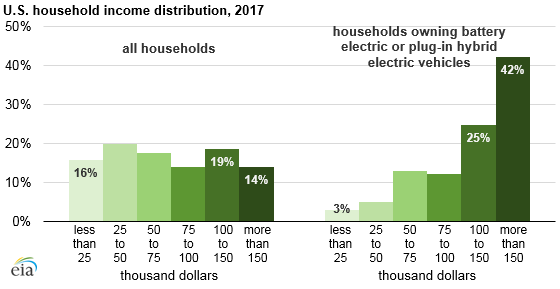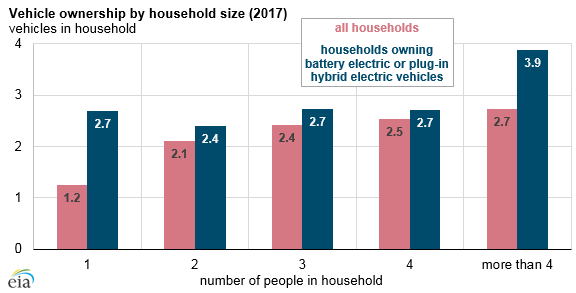Electric Cars are Mostly for Wealthy People, and You’re Subsidizing Their Purchase
Did you know that you’re subsidizing wealthy folks who purchase electric cars in the form of the federal electric vehicle tax credit, which is worth $7,500?
According to data from the Energy Information Administration, 67 percent of households that own an electric vehicle make more than $100,000 per year.
In Bernie Sanders parlance, the rich are getting richer at the expense of everyone else.

In Minnesota, some legislators want to make the deal even sweeter by giving out additional $2,500 rebates for new electric and electric hybrid vehicles.
These polices would be a mistake because despite large taxpayer handouts for electric vehicles, EIA data shows electric cars are still failing to catch on with the general public.
In fact, from 2012 through 2017, electrified vehicles only accounted for between 2.5 percent and 4.0 percent of total light-duty vehicle sales, even as the number of available models increased from 58 to 95.
Even then, battery electric vehicles accounted for just 0.6% of vehicle sales in 2017.

There are several good reasons why people simply do not want to buy electric vehicles:
Price- Electric cars are more expensive than traditional cars. For example, a new Chevy Bolt, the best value in electric cars, retails for approximately $37,500, whereas a brand new Chevy Malibu retails for about $25,000. This is a difference of about $12,500.
Much smaller range- At 238 miles, Chevy Bolt has the best range out of any electric car that isn’t a Tesla. But still, a Chevy Malibu with a standard engine will drive about 481 miles on the highway between fill-ups.
Long Refueling times- A Chevy Bolt can refuel at a rate of about 25 miles per hour, meaning you’d need about 9.5 hours to completely charge your car. Compared to a stop at the gas station, which takes about 10 minutes, you’re looking at a substantial loss in vehicle utility.
Limited Uses- Forget about taking a cross-country road trip in an all-electric vehicle because the limited range and long recharging times make the traditional family road trip virtually impossible.
Furthermore, EIA data shows households that own electric vehicles tend to own more cars than households that don’t. Given that most cars on the road are not electric, this means these households purchase electric cars in addition to the cars they already own.

The fact that even the wealthy people who own electric cars still have conventional gasoline-powered cars speaks volumes about the fact that electric cars are less useful than their conventional counterparts.
Most families don’t have an extra $12,500 laying around to spend on a vehicle that is less useful than the car they already own.
Minnesota should not enact policies that transfer wealth from working families to households making more than $100,000 so they can purchase a new toy and show their friends how eco-savvy they are.